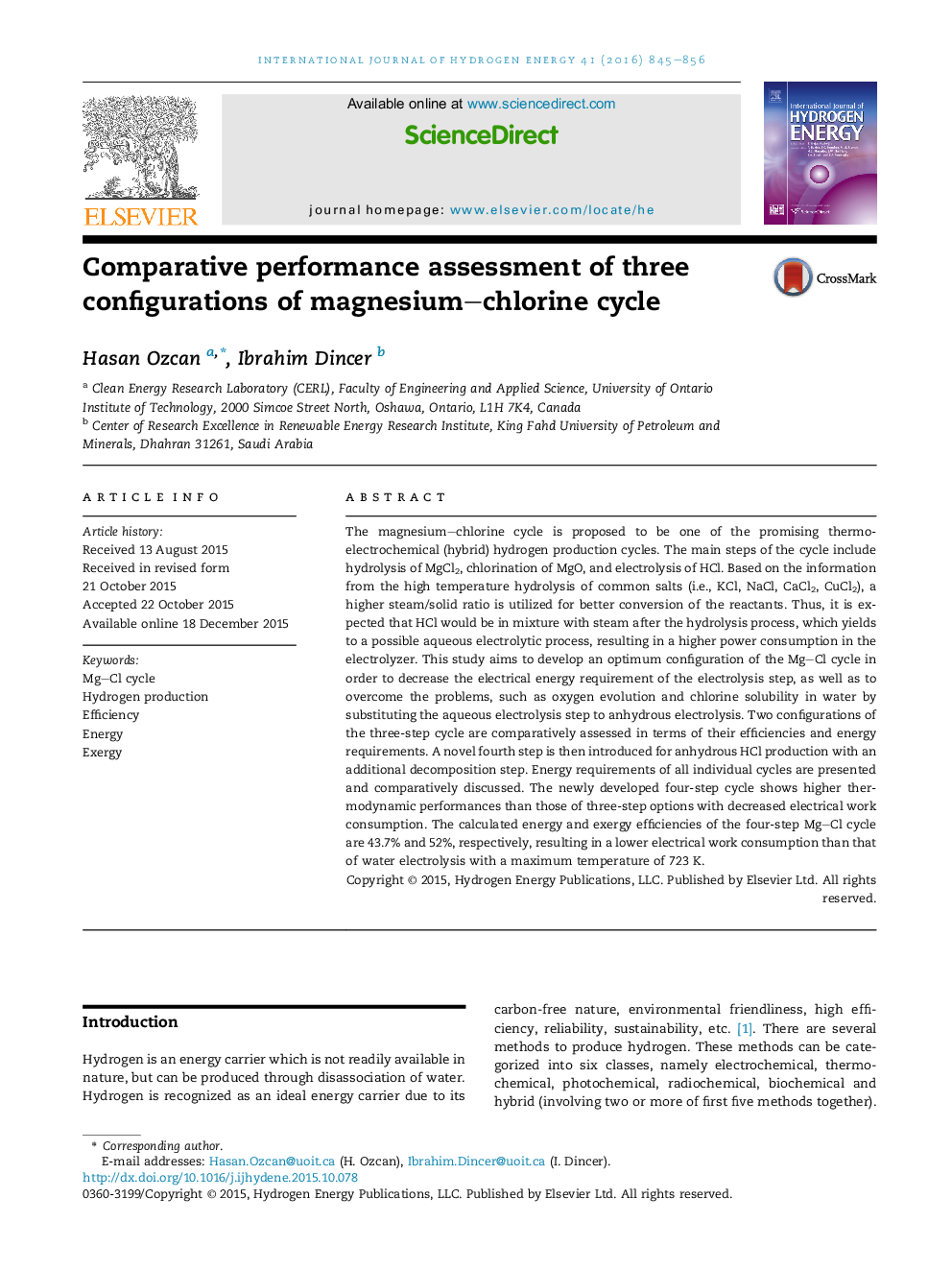| Article ID | Journal | Published Year | Pages | File Type |
|---|---|---|---|---|
| 7712497 | International Journal of Hydrogen Energy | 2016 | 12 Pages |
Abstract
The magnesium-chlorine cycle is proposed to be one of the promising thermo-electrochemical (hybrid) hydrogen production cycles. The main steps of the cycle include hydrolysis of MgCl2, chlorination of MgO, and electrolysis of HCl. Based on the information from the high temperature hydrolysis of common salts (i.e., KCl, NaCl, CaCl2, CuCl2), a higher steam/solid ratio is utilized for better conversion of the reactants. Thus, it is expected that HCl would be in mixture with steam after the hydrolysis process, which yields to a possible aqueous electrolytic process, resulting in a higher power consumption in the electrolyzer. This study aims to develop an optimum configuration of the Mg-Cl cycle in order to decrease the electrical energy requirement of the electrolysis step, as well as to overcome the problems, such as oxygen evolution and chlorine solubility in water by substituting the aqueous electrolysis step to anhydrous electrolysis. Two configurations of the three-step cycle are comparatively assessed in terms of their efficiencies and energy requirements. A novel fourth step is then introduced for anhydrous HCl production with an additional decomposition step. Energy requirements of all individual cycles are presented and comparatively discussed. The newly developed four-step cycle shows higher thermodynamic performances than those of three-step options with decreased electrical work consumption. The calculated energy and exergy efficiencies of the four-step Mg-Cl cycle are 43.7% and 52%, respectively, resulting in a lower electrical work consumption than that of water electrolysis with a maximum temperature of 723Â K.
Related Topics
Physical Sciences and Engineering
Chemistry
Electrochemistry
Authors
Hasan Ozcan, Ibrahim Dincer,
